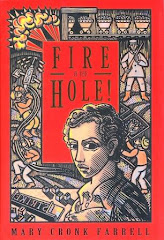
Tonight my beloved hometown basketball team, the Gonzaga Bulldogs, plays North Carolina in the Sweet Sixteen. Our son Conor will be sitting behind the Gonzaga bench with his two cousins and Uncle John. Lucky guy. The Zags are the tie that binds the Rudolf and Murphy clans with every victory, every loss dissected over the long distance and email. My dad was the first Zag fan and like my ninety-year-old mom likes to say, they attended games when the Zags were poor relations. My dad's been gone four years now. But Big Kerm loved the Zags and he loved that I am a writer.
So what do the Zags have to do with writing? Everything, including that right now I am writing this blog instead of working on my novel.
Gonzaga's run ten years ago into the Elite Eight sparked a flame that has kept flickering through good times and bad. This season has been a roller coaster, too. A great start with victories against nationally ranked teams into December. But after a loss to UConn and the February drubbing by Memphis, the team had to find their soul again. And they have, running the table in the West Coast Conference and now two NCAA tourney victories, with a different hero every night. And how about the women's team? They were within inches of making it into the Sweet Sixteen, too, while entering the tournament as a twelve seed. So enough basketball until 7p.m. PCT tonight.
We have to find our souls as writers, too, after a dry spell or rejection. So I want to write like the Zag men and women play basketball. Writing from Alaska and later Spokane, I've been insecure at times in dealing with East Coast editors, especially early in my career. But if the Zags from Spokaloo can play in the big leagues, shedding their perennial underdog moniker, so can we mid-list writers. We can survive the rejections, the days with little writing output, the bad reviews by just sawing wood, as Coach Mark Few likes to say. Dribbling out those words, nailing a three-pointer with a great metaphor, and cheering at the end of the day when we given our writing our best shot.
Only one difference between us writers and the Zags. We have to be the whole team of players. We have coaches in our editors, agents and fellow writers. But when the clock is running, it's just us. We have to be Matt Bouldin with a sense for the whole court action, the scope of our book. We have to be Micah Downs who turned his potential into reality when he finally listened to himself first. We have to block shots like Austin Daye and Josh Heyfelt, tough defenders when it comes to revising our work. WE have to light up our story with our passion like Demetri Goodson and Ira Brown. We have to keep shooting, keep writing like Steven Gray until the three-pointers, the words on the page start lighting it up again. Like Will Foster, we have to take the chances we get, even when they don't seem like enough. WE have to play like Heather Bowman even with a shoulder injury or writers' block. We have to tear up court, the page, like floor leaders Courtney Vandersloot and Jeremy Pargo.
Okay - have I beaten this metaphor to death yet? One more shot.
March Madness comes but once a year. Book acceptances and publication days, less often. But like the Zags who play summer and winter, we must write every day, even when it seems like we're fouling out. Playing well, writing well, that's in our hands - every morning. And we win, when we attach the seat of our pants to the seat of chair, as Hemingway advised. Go, Zags.

































